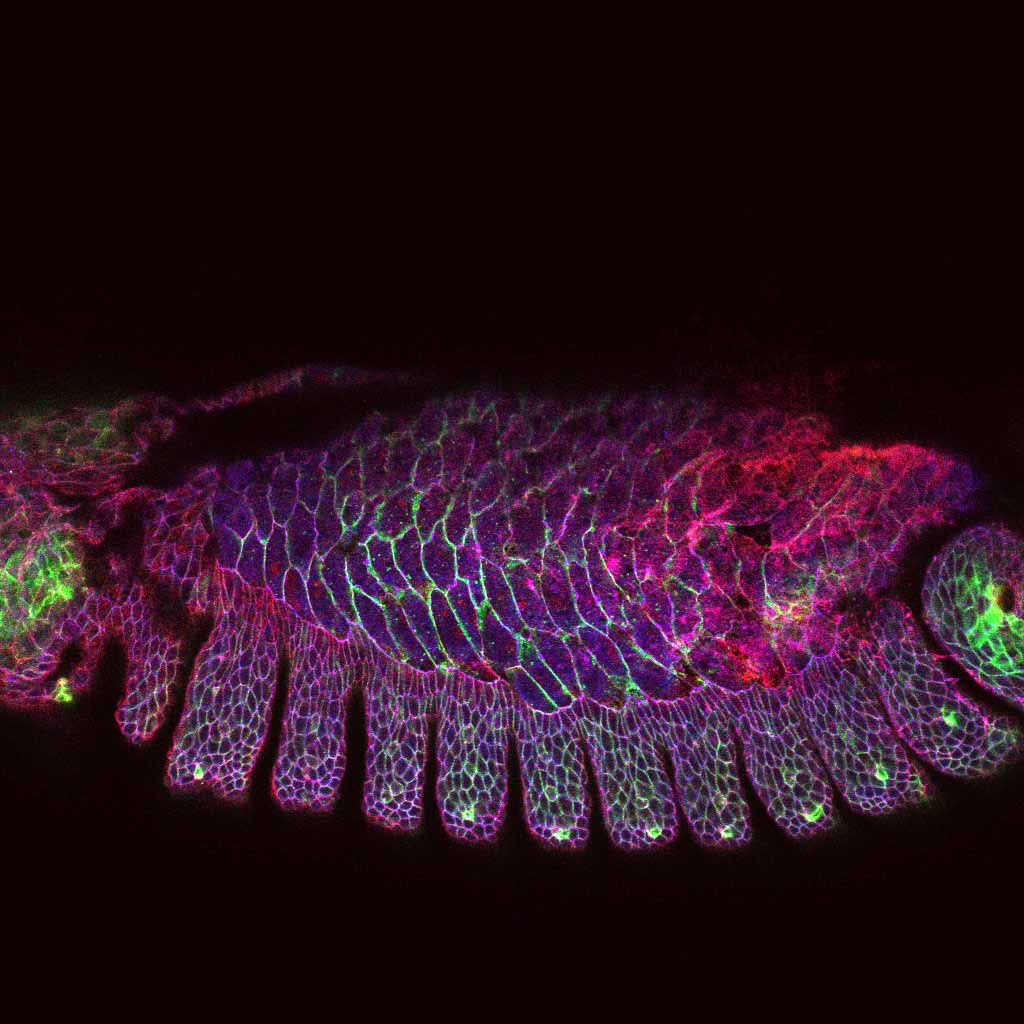Mycah Sewell Alumna Page
Background & Contact Information
Currently: Ph. D. Student, Scott Weatherbee’s lab, Yale University Molecular, Cell, Developmental, and Genetics (MCDG) track
PostBac Student/PREP Scholar in the Peifer lab (2015 – 2016)
Education: B.S., UNC-Pembroke 2015
Fellowships & Awards: UNC PREP Program
Email: mtsewell3@hotmail.com
DOWNLOAD CV

Research Information
During embryonic morphogenesis cells undergo many different changes in cell shape, number, location within the developing embryo as they establish tissues and organs. Cell migration is especially important for development since it is the movement of single cells or epithelial sheets that relocate cells to the proper sites for tissue and organ construction. Coordinated migration is highly dependent on the ability of cells to communicate with each other and remodel their cytoskeletons to move in concert. In order to organize collective migration and maintain epithelial integrity as tissues migrate, each cell must be linked to neighboring cells. These connections are made by the adherens junctions, cadherin based cell junctions that allow cells to adhere to one another and bridge the actomyosin cytoskeletons of different cells. Many proteins acting at these junctions have been identified, but the specific role and arrangement of these proteins continues to be an active area of study. Using Drosophila melanogaster, we aim to understand how cells communicate through adherens junctions to organize cooperative movement. Drosophila Canoe and its human homolog Afadin are among the proteins that localize at adherens junctions, but their function is not completely understood. Previous studies suggest Canoe is a linkage regulator between the actomyosin cytoskeleton and adherens junctions. Those studies also indicated that significant reduction of Canoe in fly embryos interferes with cell shape changes that lead to disruption of tissue formation. We are investigating the role of Canoe during dorsal closure, the stage of embryogenesis that establishes the epidermis of the fly, by reducing Canoe expression through the use of RNAi. We determined that reducing canoe gene expression to different levels results in arrest of dorsal closure, disruption of epithelial cell shape changes, and disruption of other critical developmental events such as head involution. Using these canoe knockdown phenotypes, we are exploring the specific cellular processes affected, to help us understand Canoe’s function at adherens junctions during development. This study will provide knowledge about how cells maintain tissue integrity while moving as an epithelial sheet, which could lead to treatments to improve wound healing or prevent embryonic defects in humans.
Publication from Postbac in Peifer lab
Manning, L.A., Perez-Vale, K.Z., Schaefer, K.N., Sewell, M.T., Peifer, M. (2019). The Drosophila Afadin and ZO-1 homologs Canoe and Polychaetoid act in parallel to maintain epithelial integrity when challenged by adherens junction remodeling. Molecular Biology of the Cell, in press. [PUBMED]



